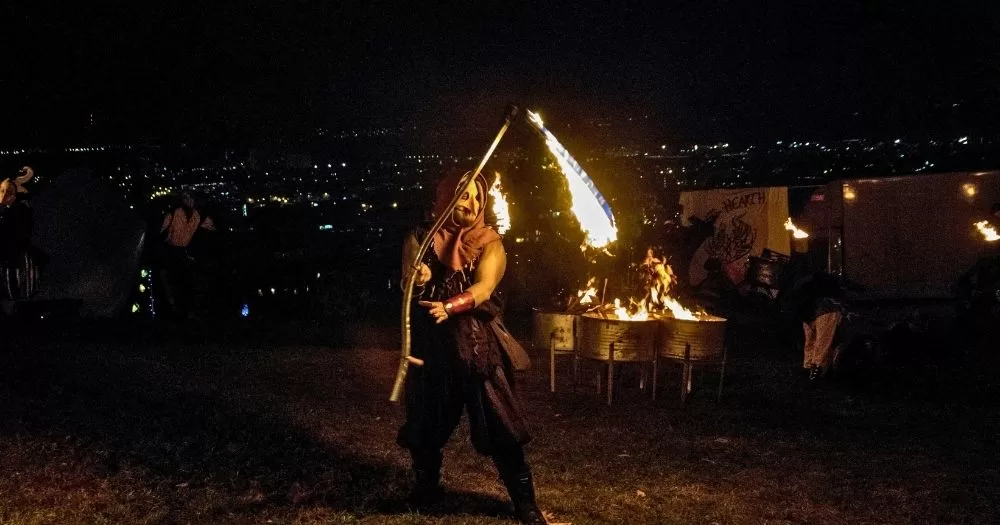The Celtic festival of Samhain has given us many of the traditions that modern-day Halloween is best known for. But what is its history?
In Celtic Ireland, Samhain was a time when the boundary between our world and the otherworld was at its thinnest, and it was believed that spirits could pass through this veil.
The tradition of wearing costumes and masks emerged from this festival, as a disguise to ward off the most dangerous spirits. The festival marked the division between summer and winter, and was regarded as the Celtic New Year, with winter considered the first season in the Celtic calendar.
Food was an important part of the celebrations, prepared for both the living and the dead. Ancestors were honoured and celebrated through these rituals. Hints of this remain in contemporary Halloween traditions, often centring around food and food-related games like bobbing for apples.
The Christian holiday of All Saints’ Day was moved to November in the 8th century, bringing with it another marked occasion for honouring the dead and merging with many of the Samhain traditions. When Irish people were forced to emigrate to America during the famine, these traditions were carried across the Atlantic, leaving a distinctly Irish legacy on the Halloween season.
Bonfires had also played a key role in marking the festival of Samhain. The Tlachtga hill in the Boyne Valley was believed to be the site of the Great Fire Festival, which occurred on the eve of Samhain. Household fires subsequently offered spirits a safe welcome home.
It may be the case that ‘trick or treat’ traditions also have their origins in this Celtic festival. Ritual offerings were common during the festivities to keep ghosts and harmful spirits at bay. If the spirits were not pleased, the household would be faced with bad luck for the year ahead.
Today, Halloween is celebrated across cultures and countries, with traces of its Celtic origins found in many of the rituals and traditions of the holiday. For queer people, Halloween has always been a time of expression and community.
In Ireland, many communities across the country seek to embrace the Celtic roots behind Halloween, with Samhain-themed festivals and parades taking place. From the Samhain Festival in Clonakilty, Co. Cork, to the Púca Festival in Co. Meath, there are many chances to engage with the holiday season, big and small.
© 2025 GCN (Gay Community News). All rights reserved.
Support GCN
GCN is a free, vital resource for Ireland’s LGBTQ+ community since 1988.
GCN is a trading name of National LGBT Federation CLG, a registered charity - Charity Number: 20034580.
GCN relies on the generous support of the community and allies to sustain the crucial work that we do. Producing GCN is costly, and, in an industry which has been hugely impacted by rising costs, we need your support to help sustain and grow this vital resource.
Supporting GCN for as little as €1.99 per month will help us continue our work as Ireland’s free, independent LGBTQ+ media.
